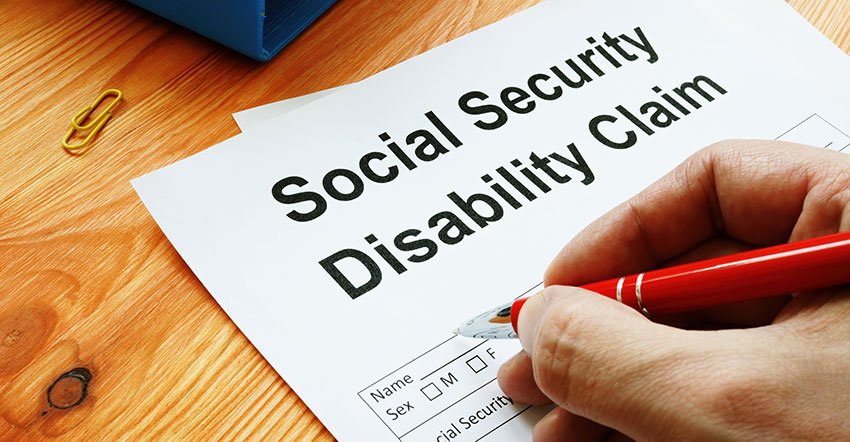Affordable housing programs are essential for many low-income individuals and families struggling to find a place they can call home. Households that are particularly affected may live in high cost areas where a basic apartment is extremely expensive! However, all types of people can experience housing insecurity. If you’re spending too much on your housing costs, you may find yourself becoming cost-burdened. This means that it can be a struggle to pay for needs like food, healthcare, and education while also covering rent costs. If you’re struggling with housing affordability, various government assistance programs may be able to help. In order to benefit from what’s out there, you first need to know what’s available.
What Does Your Housing Budget Look Like?
When it comes to affordable housing, many people just don’t know where to start. A good starting point is to determine a budget that makes sense for you. This means that you need to understand how much income you bring in each month. Then you can decide what is a reasonable amount to spend on expenses like rent and other housing utilities. Households that spend too much of their income on housing can find themselves potentially facing financial challenges down the line.
When it comes to deciding on your budget, you might be wondering how you can determine how much to spend. The United States Department of Housing and Urban Development (HUD) determines a general guideline for you to follow. As a general rule, it’s considered wise not to spend more than 30% of your gross income on housing expenses. For example, if you make $3,200 per month in gross income, 30% of that, would leave you with $960 for housing costs.
Online Resources that Can Help You Find Your Available Options
Once you’ve determined what your budget should look like, you can start figuring out how to get your finances there. If you don’t make a lot of income, keeping your housing costs below a certain percentage can be difficult to do. The housing market has been crazy the last few years making affordable housing increasingly rare. If you’re looking for housing support, you can research the different options that are available to you. You may also benefit from different kinds of support besides housing. Two online resources that can help are:
- Benefits.gov
- 211.org
Benefits.gov
This website is where you can find information about almost every government program that is out there. Not only that, but the site provides contact information for certain programs, as well as advice on financial topics. Benefits.gov has a few different ways that users can browse and research programs. First, people who are just getting started and don’t have a specific program in mind, can use Benefit Finder. Users simply offer details about themselves and their current circumstances, and the search engine offers programs relevant to them.
Another option is to search for programs by the government agency that offers them or by different categories. However, this option requires being familiar with what types of programs are out there. Overall, this website is helpful if you’re wanting to check out the various federal opportunities that exist!
211.org
This website commonly helps families and individuals that are reaching out for help with affordable housing. However, people in need of other types of assistance can utilize this website too. Basically, the website provides users with a tool to find information about resources provided locally. In order to connect you with the right support, the website needs some personal details about what you’re dealing with.
This website has proven to be effective in helping people find housing support. As a matter of fact, 211.org has connected 5.3 million households with assistance programs. Millions of people who were at risk of experiencing housing insecurity or homelessness were able to get help with their situation. Users can get connected with different opportunities that can help with a variety of housing expenses.
Finally, you also have the option to reach out to your local Public Housing Authority (PHA). PHAs are responsible for the operation of the federal housing assistance within their community. Therefore, this is a great resource for accurate information about what’s available near you.
Different Types of Housing Assistance to Consider
There are many affordable housing programs available to help individuals and families find suitable homes. These programs provide financial assistance for housing, ensuring access to safe and secure living conditions. The HUD offers two popular rent assistance programs. You may also benefit from various supportive housing programs that can provide you a temporary place to stay. Below we are going to cover all three:
- Public Housing
- The Housing Choice Voucher Program
- Supportive Housing
Public Housing
This housing support opportunity offers qualifying households an affordable place to live within a public housing unit. When it comes to federal rent assistance, you can expect to work directly with your local PHA. Although the HUD provides these opportunities through funding, local PHAs are in charge of administering the program. Before you’re able to move in, your PHA will need to go over your references. These can provide a clearer picture of whether you’re going to be a good tenant! If your references don’t check out, you could be denied. This step is important because the PHA is basically the landlord of public housing units.
If you’re eligible for this program, you’re offered a unit to live in at an affordable rate to you. You might not know that public housing includes more types of homes, other than just apartments. If you’re interested in living in public housing, you can get started by reaching out to your local PHA. You can also direct any additional questions to a HUD Field Office near you. In order to be eligible for this program, the following factors are considered:
- Citizenship Status
- Income Level
- Previous Rental History
- Household Status
The Housing Choice Voucher Program
Another popular program offered by the HUD is the Housing Choice Voucher program, or Section 8. Essentially, this program enables people to live in a rental unit of their choice without needing to pay high rent prices. If you’re eligible, you receive a voucher that covers part of your monthly rent payment. Your PHA pays the voucher to the property owner, covering a portion of the rent. After that, you are responsible for paying what is left over each month.
When finding a place to live with Section 8, you must find an apartment, house, or other type of property that accepts these vouchers. In addition to that, the property needs to meet certain standards set by your PHA. Finding suitable housing can sometimes be challenging with limited options available in some areas!
In order to get Section 8, you need to meet certain criteria. For example, generally your household’s yearly gross income should not exceed 50% of the area’s median income (AMI) limits set by HUD. To apply for Section 8 assistance, contact your local PHA office or visit their website where they may provide application forms online. Keep in mind that there are often waiting lists due to high demand. Therefore, applying as soon as possible is essential if you’re in need of financial relief!
Supportive Housing
Rent assistance is a great opportunity for households that want to keep their housing costs down. However, limited funding and waitlists can be huge obstacles to overcome with these federal programs. You may find yourself in a situation where you can’t wait for assistance and need help right away. The following options may be able to help:
- Emergency Shelters
- Rapid Re-Housing (RRH)
- Transitional Shelters
- Permanent Supportive Housing (PSH)
Emergency Shelters
Emergency shelters come in various forms and cater to different populations. Some are open 24 hours a day, while others only operate during certain hours. There are general population shelters that serve both men and women. Meanwhile, there are also specialized facilities for specific groups such as families, youth, or survivors of domestic violence. Emergency shelters are known for offering people a short-term solution during a time of great need.
Rapid Re-Housing (RRH)
This housing support option helps individuals that are not chronically homeless. Meaning they haven’t been dealing with homelessness for an extended period of time. This program helps people by offering temporary community services. They can also help people secure their own place to live in. RRH is a “housing first solution” that helps individuals regain their independence in order to find permanent housing.
Transitional Shelters
This supportive housing program provides a longer-term solution for people experiencing homelessness. Not only that, these shelters offer other helpful services to people in need. Individuals can usually expect to stay in a transitional shelter for as little as six months or as long as two years. How long someone needs support depends on their personal situation.
Permanent Supportive Housing (PSH)
This housing support option is tailored towards people who are chronically dealing with homelessness. Individuals that fall under this category match certain circumstances. The HUD determines that someone chronically experiencing homelessness relates to one of the following:
- Lived in an emergency shelter for at least one year (or four separate times, totaling one year, over the course of three years)
- Has lived in a Safe Haven center for at least one year (or four separate times, totaling one year, over the course of three years)
- Lived in a place that is not meant to be inhabited by people for at least one year (or four separate times, totaling one year, over the course of three years)
- Checked into an institutional care facility for no longer than 90 days (only after having lived in any of the places listed above)
PSH aims to offer immediate support to people in need. This program is another “housing first solution.” Lastly, this support option can provide both short-term and long-term support.
Let’s Sum it Up
Understanding the different types of affordable housing programs available and their eligibility criteria can help you find safe and stable housing. There are a variety of ways to research your options online. You can check out benefits.gov to find details about the many types of government programs out there. You can also use 211.org to find out how to handle your housing situation and what’s available near you.
When searching for affordable housing, you can consider two popular federal support opportunities. The United States Department of Housing and Urban Development (HUD) offers rental assistance to low-income households. You can utilize either Public Housing or the Housing Choice Voucher Program to get the help that you need. Additionally, community-based organizations and non-profit groups offer supportive services to those experiencing chronic homelessness. Whatever route you decide to take, it’s important to take your time before making any major decisions! Your living situation plays a key role in your overall quality of life. You deserve a safe and affordable place to stay.



